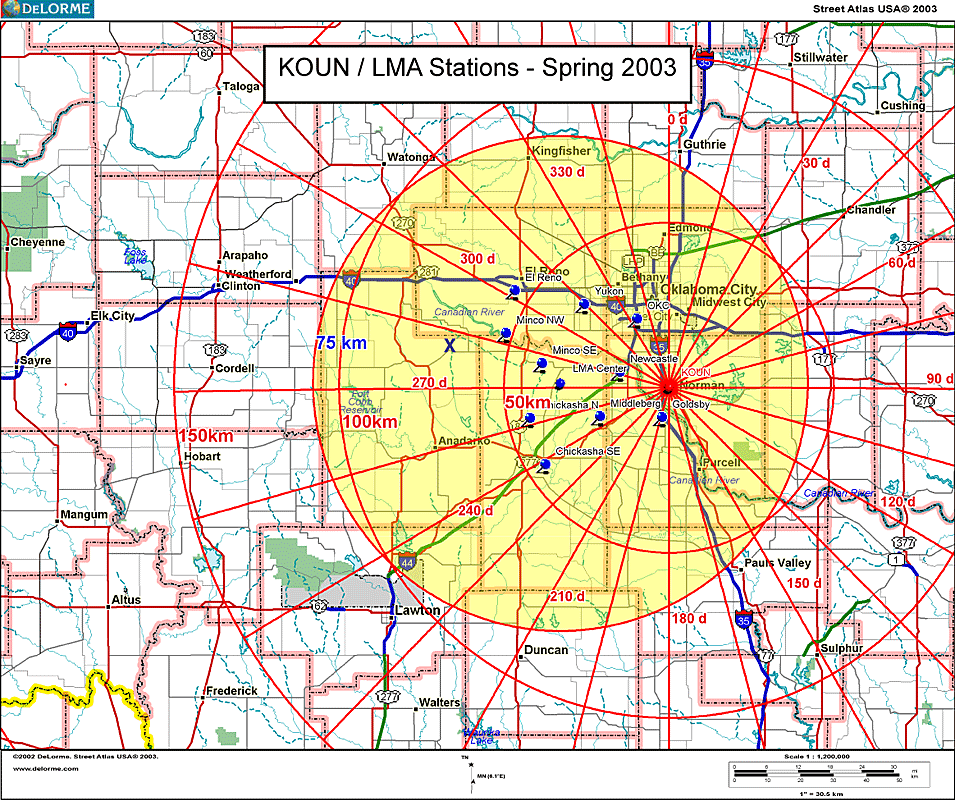TELEX Project
Day and night during the month of May 2003 and 2004, a crew of fourteen (including OU students), scrambled to get in position beneath storms to launch instrumented balloons. The balloons were part of TELEX, the Thunderstorm Electrification and Lightning EXperiment. TELEX was a series of two sequential spring field programs held during the Joint Polarization Experiment. The broad objective of TELEX is to learn how lightning and other electrical storm properties are dependent on storm structure, updrafts, and precipitation. This information will point to new ways for the National Weather Service to use lightning observations to improve forecasts and warnings of hazardous weather.
TELEX took advantage of new sensors now used routinely by NSSL. One is the KOUN radar in Norman, a WSR-88D radar modified with polarimetric parameters to provide information about the particle size and water phase of precipitation. The other new sensor is the Oklahoma Lightning Mapping Array (LMA). The OK-LMA is a network of ten stations in central Oklahoma that continuously maps the structure of all types of lightning in three-dimensions out to a range of 75 km and in two-dimensions out to a range of 200 km.
To these two systems, the TELEX team added balloon soundings to measure the electric field profile of storms. An electric field profile can provide scientists information about how a storm becomes electrified and about the forces responsible for lightning. This effort, funded partyl by the National Science Foundation (NSF grant ATM-0233268), was the maiden field program for NSSL's new mobile laboratory, used to collect the balloon data. The electric field sensor was custom-built by NSSL with assistance from OU, New Mexico Institute of Mining and Technology, and NCAR. Temperature, pressure, and humidity were measured by an NCAR system that also provided GPS tracking of the balloon.
The TELEX team succeeded in flying fourteen balloons into nine storms on seven missions. Two of these storms were mesoscale convective systems, a specific target of TELEX. NSSL scientists are now analyzing the processed data to address the project's objectives.

TELEX Field Operations Region. The yellow circle indicates the region of three dimensional mapping by the Oklahoma Lightning Mapping Array (OK-LMA) and also the region of TELEX field operations. Blue pins mark the locations of the OK-LMA stations. Red range rings are centered on the KOUN polarimetric Doppler radar in 50 km increments. For 2004, a new OK-LMA station was added at the X to expand coverage a bit to the west. [+]

